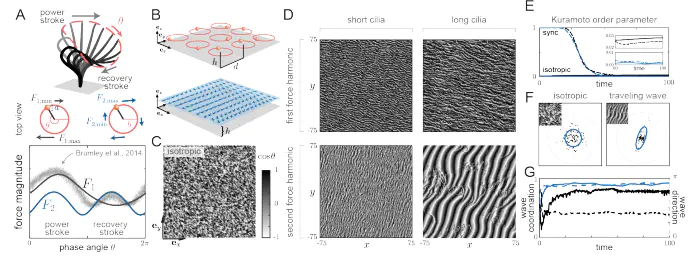
Abstract
Ciliated tissues such as in the mammalian lungs, brains, and reproductive tracts, are specialized to pump fluid. They generate flows by the collective activity of hundreds of thousands of individual cilia that beat in a striking metachronal wave pattern. Despite progress in analyzing cilia coordination, a general theory that links coordination and fluid pumping in the limit of large arrays of cilia remains lacking. Here, we conduct in-silico experiments with thousands of hydrodynamically-interacting cilia, and we develop a continuum theory in the limit of infinitely-many independently beating cilia by combining tools from active matter and classical Stokes flow. We find, in both simulations and theory, that isotropic and synchronized ciliary states are unstable. Traveling waves emerge regardless of initial conditions, but the characteristics of the wave and net flows depend on cilia and tissue properties. That is, metachronal phase coordination is a stable global attractor in large ciliary carpets, even under finite perturbations to cilia and tissue properties. These results support the notion that functional specificity of ciliated tissues is interlaced with the tissue architecture and cilia beat kinematics and open up the prospect of establishing structure-to-function maps from cilium-level beat to tissue-level coordination and fluid pumping.